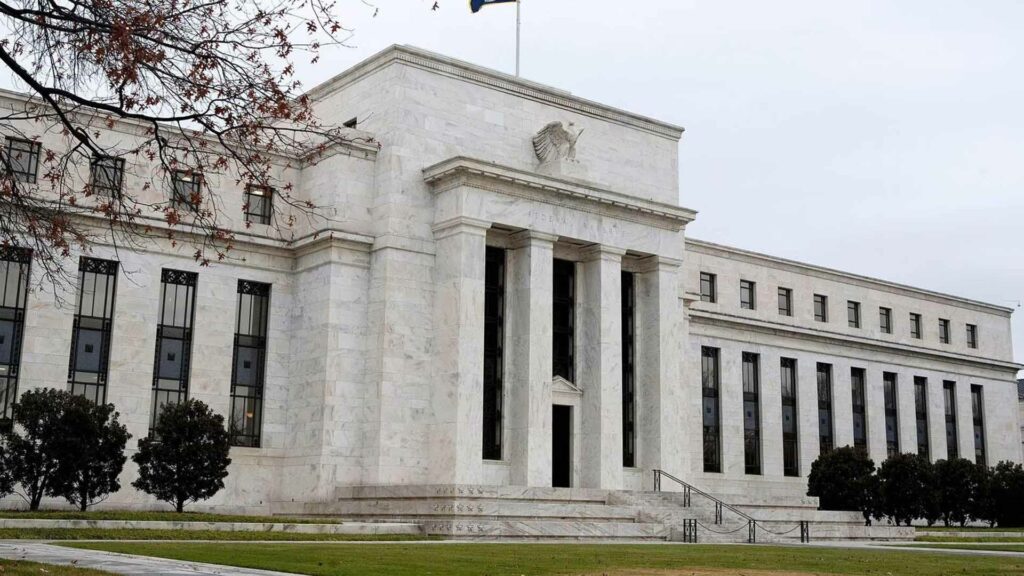|
Getting your Trinity Audio player ready...
|
The credit crunch, a phenomenon feared by financial experts and policymakers alike, has the potential to disrupt economic stability and hinder business growth.
With recent concerns raised by the Federal Reserve about the possibility of a credit crunch on the horizon, business leaders must pay close attention to the signs indicating its emergence.
A credit crunch refers to a situation in which lending becomes scarce, and financial institutions tighten their lending standards, making it challenging for businesses and individuals to access credit. This tightening of credit conditions can have far-reaching consequences, impacting investment, consumer spending, and overall economic activity.
The Federal Reserve, as the central bank of the United States, closely monitors credit conditions and plays a pivotal role in managing the stability of the financial system. Their concerns about a potential credit crunch signal the importance of understanding the factors contributing to this phenomenon and its implications for businesses.
In this article, we will examine the signs of tightening credit conditions that have emerged in recent times.
We will explore indicators that suggest lending standards are becoming more stringent and examine specific sectors or industries facing challenges in obtaining credit. By analyzing these signs, we can gain insights into whether a credit crunch is indeed materializing.
Indicators of Tightening Credit Conditions
As the Federal Reserve expresses concerns about a potential credit crunch, business leaders must be aware of the indicators that suggest tightening credit conditions are taking shape. By closely monitoring these signs, you can make informed decisions and take appropriate actions to safeguard your organization's financial health. Let's explore some key indicators that may signal the emergence of a credit crunch.
- Increasing Interest Rates: One significant indicator of a potential credit crunch is the upward trend in interest rates. As the Federal Reserve aims to manage inflation and maintain economic stability, it may raise interest rates. Higher borrowing costs can squeeze businesses' cash flows and make it more expensive to obtain credit. Pay attention to changes in interest rates, as they can directly impact your organization's ability to access affordable financing.
- Stricter Lending Standards: Another indicator of a credit crunch is the tightening of lending standards by financial institutions. Banks and lenders may become more cautious in their lending practices, requiring higher credit scores, more collateral, or stricter documentation. If you encounter difficulties in obtaining loans or credit lines, it could be a sign that lending standards are tightening, potentially leading to limited credit availability in the broader market.
- Reduced Credit Offerings: Observing a decline in credit offerings from financial institutions can also be an indication of tightening credit conditions. If you notice that banks are reducing their credit lines or scaling back their lending activities, it may be a sign that they are becoming more risk-averse or facing constraints in their ability to extend credit. This reduction in credit availability can impact businesses seeking funds for expansion, investments, or working capital.
- Industry-Specific Challenges: Certain sectors or industries may face specific challenges in accessing credit, even before a credit crunch becomes widespread. For example, industries that have experienced significant disruptions or face uncertainties due to market shifts, technological advancements, or regulatory changes may encounter stricter lending conditions. Keep an eye on developments in your industry and monitor any changes in credit availability within your sector.
- Decreased Investor Confidence: Investor sentiment and confidence play a crucial role in credit market dynamics. If investors become more risk-averse or sceptical about economic prospects, they may pull back from providing funds to businesses, leading to reduced credit availability. Monitor shifts in investor sentiment and assess whether it may have a broader impact on credit conditions.
While these indicators do not guarantee the presence of a credit crunch, they serve as warning signs for businesses to stay vigilant and adapt their financial strategies accordingly. Recognizing these signs early can provide you with a competitive advantage, allowing you to explore alternative financing options, review your capital structure, or seek out partnerships to navigate potential credit challenges.
Factors Contributing to the Potential Credit Crunch
While the indicators discussed in the previous section provide valuable insights into tightening credit conditions, it is essential to understand the underlying factors that contribute to the potential credit crunch.
By examining these factors, you can gain a deeper understanding of the challenges they may face and proactively address them. Let's explore some key factors that are currently shaping the credit landscape.
- Rising Interest Rates: One influential factor contributing to the potential credit crunch is the Federal Reserve's monetary policy decisions, particularly regarding interest rates. As the economy strengthens and inflationary pressures build, the Federal Reserve may choose to raise interest rates to maintain price stability. Higher interest rates can increase borrowing costs for businesses, making it more challenging to access credit and potentially limiting investment and growth opportunities.
- Regulatory Environment: The regulatory landscape also plays a significant role in shaping credit conditions. Following the global financial crisis of 2008, regulators implemented stricter regulations and oversight to enhance financial stability and protect consumers. While these regulations are vital for safeguarding the financial system, they can also have unintended consequences, such as reducing the availability of credit. Increased compliance requirements and capital adequacy standards may lead financial institutions to adopt more cautious lending practices, resulting in a potential credit squeeze.
- Economic Uncertainty: Uncertainty surrounding economic conditions, both domestically and globally, can contribute to a credit crunch. Business leaders face challenges when making investment decisions or seeking credit in an environment marked by geopolitical tensions, trade disputes, or economic volatility. Uncertainty can lead lenders to adopt a more cautious approach, resulting in tighter credit availability and potentially impacting businesses' ability to fund their operations or expansion plans.
- Debt Levels and Leveraged Loans: The level of debt in the economy, particularly corporate debt, is a factor that can exacerbate the risk of a credit crunch. High levels of debt, coupled with increased reliance on leveraged loans, can create vulnerabilities in the financial system. If businesses struggle to service their debt obligations or face difficulties in refinancing existing loans, it can trigger a chain reaction, tightening credit conditions and affecting overall market liquidity.
- Investor Risk Appetite: Investor risk appetite is another influential factor that can shape credit conditions. In times of economic uncertainty or market volatility, investors may become more risk-averse, seeking safer investments and reducing their exposure to riskier assets, including corporate debt. This decreased risk appetite can lead to reduced demand for corporate bonds and other debt instruments, potentially limiting businesses' access to capital.
Understanding these contributing factors provides valuable insights into the dynamics of the credit market and enables business leaders to develop strategies to navigate potential challenges. It is crucial to stay informed about changes in interest rates, regulatory developments, and economic trends.
Warren Buffett: Berkshire Hathaway Prepares For Impact

In a notable development, Berkshire Hathaway's investment activity also sheds light on Warren Buffett's concerns about the potential risks associated with geopolitical tensions.
In November 2022, Berkshire Hathaway purchased a substantial amount of stock in Taiwan Semiconductor Manufacturing Company (TSMC), totalling US$4.1 billion (NT$126 billion). TSMC, a key player in the global semiconductor industry, has been instrumental in powering technological advancements worldwide.
However, just a few months later, in February of this year, Berkshire Hathaway made headlines when it revealed that it had sold off 86% of its shares in TSMC. This move triggered speculation and raised questions about Buffett's motivations and the factors driving his decision. One prevalent theory was that the sale was prompted by concerns about the security of TSMC's Taiwan fabs, given the escalating military manoeuvres by China.
This incident serves as a reminder of the multifaceted challenges and risks that business leaders must consider when navigating a potential credit crunch. Geopolitical tensions can significantly impact market dynamics and introduce additional complexities to investment decisions.
Warren Buffett's actions about TSMC highlight the importance of closely monitoring geopolitical developments and factoring them into strategic investment choices.







